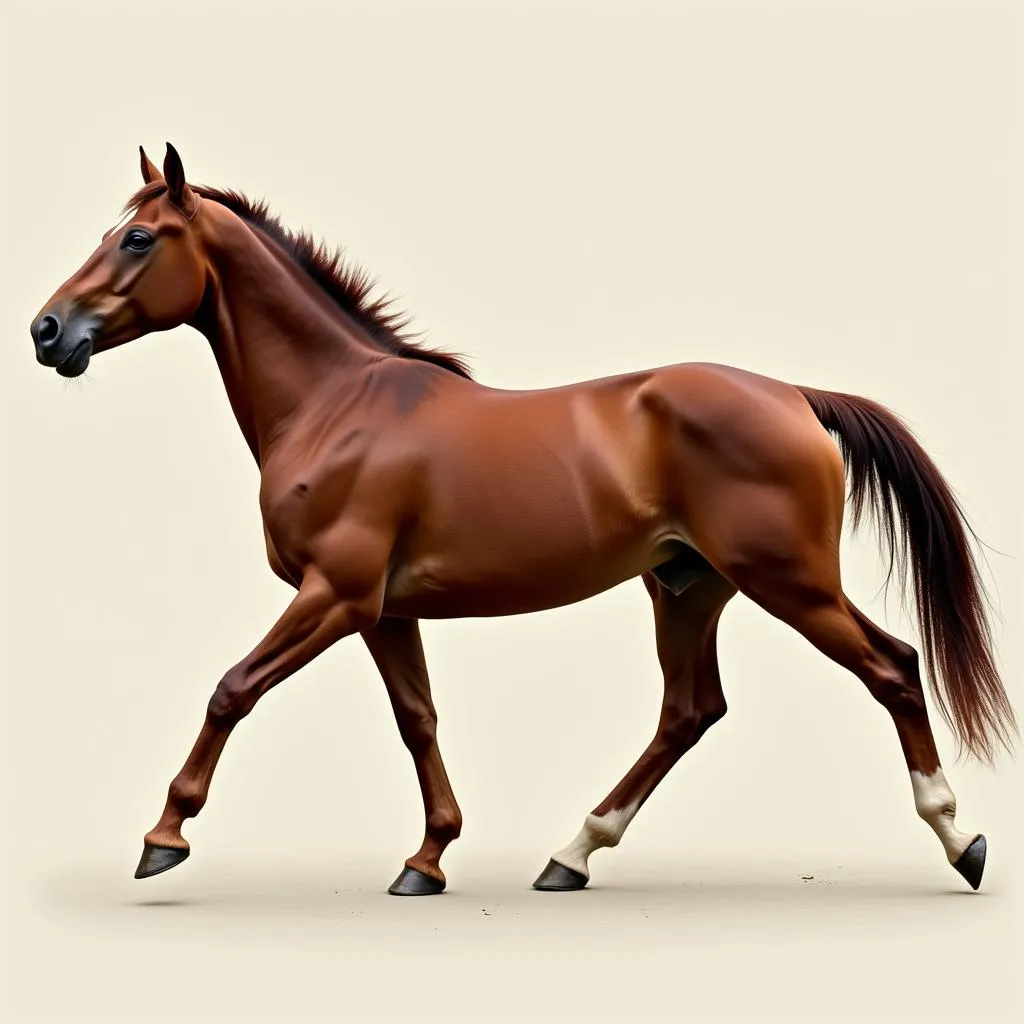The term “Horse Scotch” might spark curiosity, conjuring images of equines sipping on fine whiskey. However, the reality is far less glamorous, albeit far more concerning. “Horse scotch” doesn’t refer to a beverage, but rather to a harmful practice involving the intentional infliction of pain on a horse’s legs to manipulate its gait. This cruel method, often used in show rings, aims to achieve a high-stepping, exaggerated walk that is often misinterpreted as a sign of quality or breed. This article delves into the truth behind “horse scotch,” exploring its methods, ethical implications, and the importance of recognizing and condemning this abusive practice.
The Cruel Mechanics of Horse Scotch
“Horse Scotch” encompasses a range of techniques, all designed to cause discomfort or pain to a horse’s legs, forcing it to alter its natural way of moving. Some common methods include:
- Applying Irritants: Harsh chemicals, like kerosene or mustard oil, are applied to the pasterns (the area just above the hoof) to create a burning sensation. This causes the horse to lift its legs higher and faster in an attempt to escape the pain.
- Mechanical Devices: Chains or weighted boots might be used to strike the horse’s pasterns as it walks, again aiming to induce an unnatural gait through pain and discomfort.
 Horse Scotch Methods
Horse Scotch Methods - Surgical Interference: In extreme cases, nerves in the horse’s legs may be surgically severed to numb sensation and create the illusion of a high-stepping gait. This method is particularly barbaric, as it permanently alters the horse’s natural movement and can lead to long-term health issues.
The Deceptive Allure of an Unnatural Gait
The high-stepping walk that “horse scotch” aims to achieve is often presented as a desirable trait in certain show rings, particularly in breeds known for their flashy movement. However, this unnatural gait is not an indication of superior breeding or training but rather a clear sign of animal cruelty.
Horses forced into these exaggerated movements are often experiencing significant pain and discomfort. Over time, this abuse can lead to:
- Lameness: The constant irritation and forced movement can cause inflammation, tendon injuries, and long-term lameness.
- Psychological Trauma: Horses subjected to “horse scotch” often exhibit signs of fear, anxiety, and stress.
- Physical Scars: The chemicals and devices used can leave lasting physical scars on the horse’s legs.
 Horse Exhibiting an Unnatural Gait
Horse Exhibiting an Unnatural Gait
Recognizing and Combating Horse Scotch
Identifying “horse scotch” can be challenging, as perpetrators often go to great lengths to hide their methods. However, some telltale signs can indicate a horse is being subjected to this cruel practice:
- Exaggerated Gait: A horse that consistently moves with an excessively high knee action, particularly if it appears forced or unnatural.
- Sensitivity to Touch: Horses subjected to “horse scotch” may flinch or react defensively when their pasterns are touched.
- Unexplained Lameness: Sudden or recurring lameness, especially after participating in shows or training sessions.
- Behavioral Changes: Increased anxiety, fear, or aggression, particularly when being handled around the legs.
Taking a Stand Against Cruelty
“Horse scotch” is a blatant form of animal abuse that has no place in the equine world. Recognizing the signs, speaking out against it, and supporting organizations that advocate for equine welfare are crucial steps in eradicating this cruel practice.
If you suspect a horse is being subjected to “horse scotch,” it’s crucial to report it to the appropriate authorities, such as animal control or a reputable equine welfare organization.
Remember, horses deserve to be treated with respect and compassion. Let’s work together to ensure their well-being and put an end to the cruel practice of “horse scotch.”
Frequently Asked Questions about Horse Scotch
1. Is “horse scotch” illegal?
Yes, “horse scotch” is considered animal cruelty and is illegal in many jurisdictions. The specific laws and penalties vary depending on the location.
2. Why do people still practice “horse scotch” if it’s cruel and illegal?
Unfortunately, some individuals prioritize winning and financial gain over the welfare of their horses. The desire to achieve a specific look or gait in the show ring can drive some to engage in this unethical practice.
3. What can I do to help stop “horse scotch”?
Educate yourself and others about the practice, report suspected cases to the authorities, and support equine welfare organizations working to end this cruelty.
Need More Information?
Visit our website JustusHorses.com for more in-depth articles on horse care, training, and ethical practices. We are committed to promoting the well-being of horses everywhere.
For immediate assistance or to report a case of suspected horse abuse, please contact:
Phone: 0772127271
Email: [email protected]
Address: QGM2+WX2, Vị Trung, Vị Thuỷ, Hậu Giang, Việt Nam
Our dedicated team is available 24/7 to address your concerns and provide support.